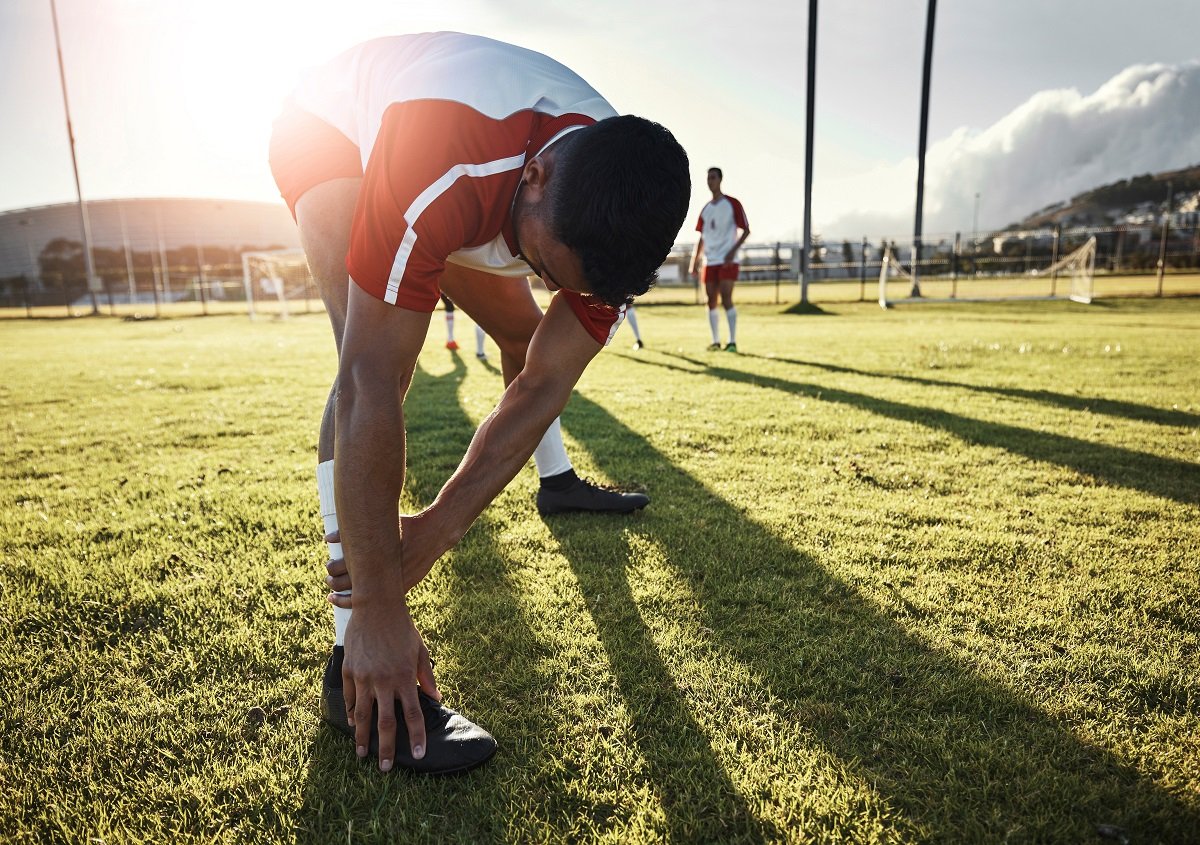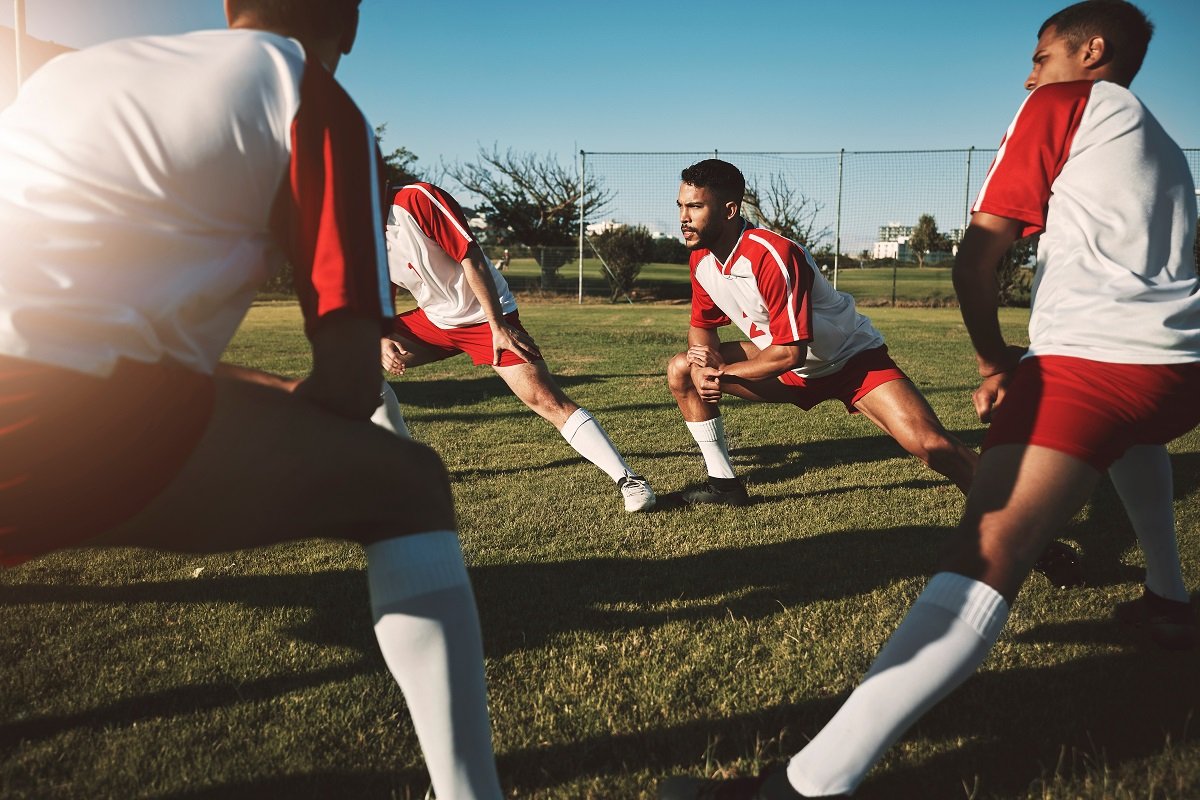
Football is a dynamic sport that demands a high level of physical fitness, agility, and endurance. Proper warm-up and cool-down routines are crucial to prevent injuries and enhance performance on the field. In this guide, we'll explore essential warm-up and cool-down exercises that every footballer should incorporate into their routine, and we'll discuss why these practices are vital for players of all levels. Whether a beginner or a seasoned professional, the right exercises can make all the difference.
Contents
1. The importance of warming up and cooling down
2. Essential warm-up exercises for football
- Dynamic stretching
- Cardiovascular warm-up
- Football-specific drills
3. Football cool-down exercises for recovery
- Light aerobic activity
- Static stretching
- Mobility work
4. Football warm-up exercises for groups
- Rondo drills
- 4v4-thirds of field
- 3v2 to goal
5. How to warm up effectively before playing football
6. How to cool down effectively after playing football
7. Tips for effective stretching
- Dynamic vs. static stretching: when and why
- Proper stretching techniques
The importance of warming up and cooling down
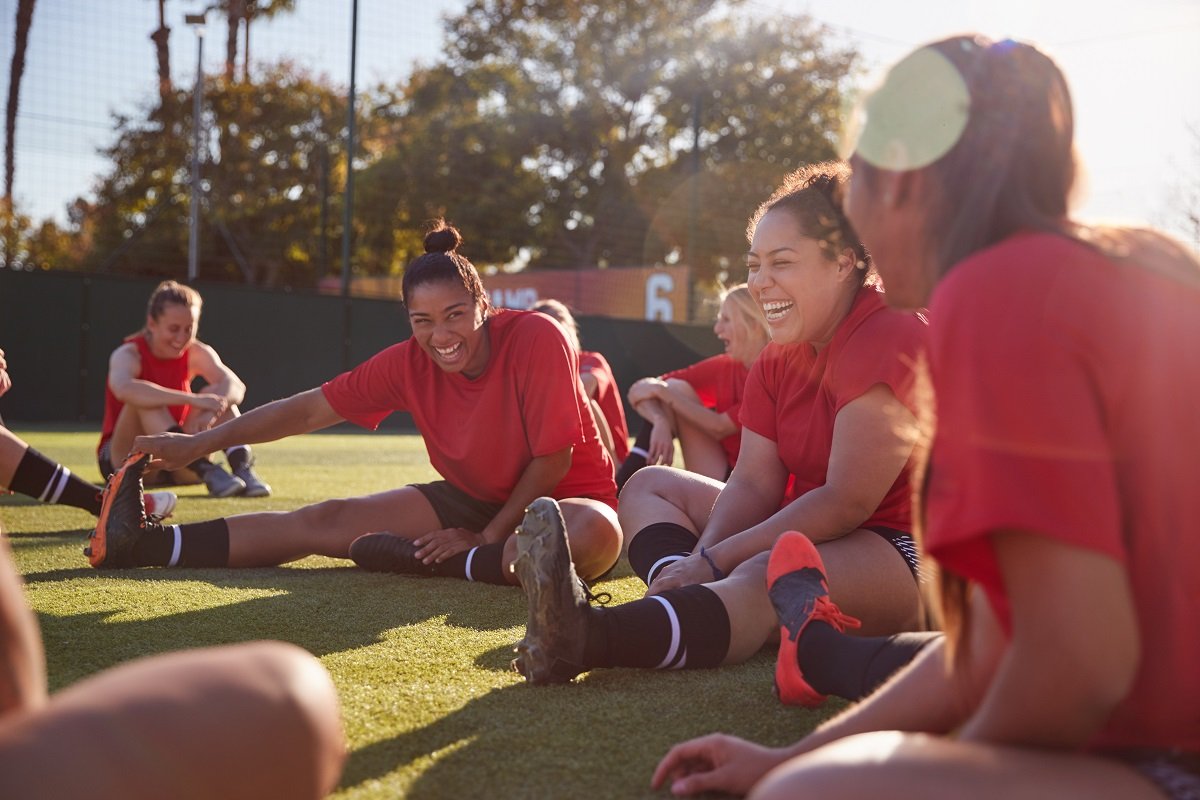
Why warming up is essential
Warming up is critical for preparing your body for the intense physical activity involved in football. A proper warm-up:
- Increases blood flow: Enhances circulation to muscles, which raises their temperature and reduces the risk of injury.
- Improves muscle elasticity: Warmer muscles are more elastic, reducing the likelihood of strains and tears.
- Enhances performance: Gradually increasing heart rate and muscle activity primes the body for high-intensity efforts.
- Boosts mental focus: A structured warm-up routine can also help players get into the right mindset for the game.
The role of cooling down
Cooling down after a game or training session is equally important:
- Aids in recovery: A cool-down helps reduce muscle stiffness and soreness by gradually decreasing the intensity of exercise.
- Prevents blood pooling: Light activity helps maintain blood flow, preventing blood from pooling in the lower extremities.
- Promotes flexibility: Stretching during the cool-down phase can help maintain and improve flexibility, which is crucial for injury prevention.
- Mental relaxation: Helps in transitioning from a state of high alert and activity to rest and recovery.
READ ALSO: Football workouts to improve your fitness and your game
Essential warm-up exercises for football
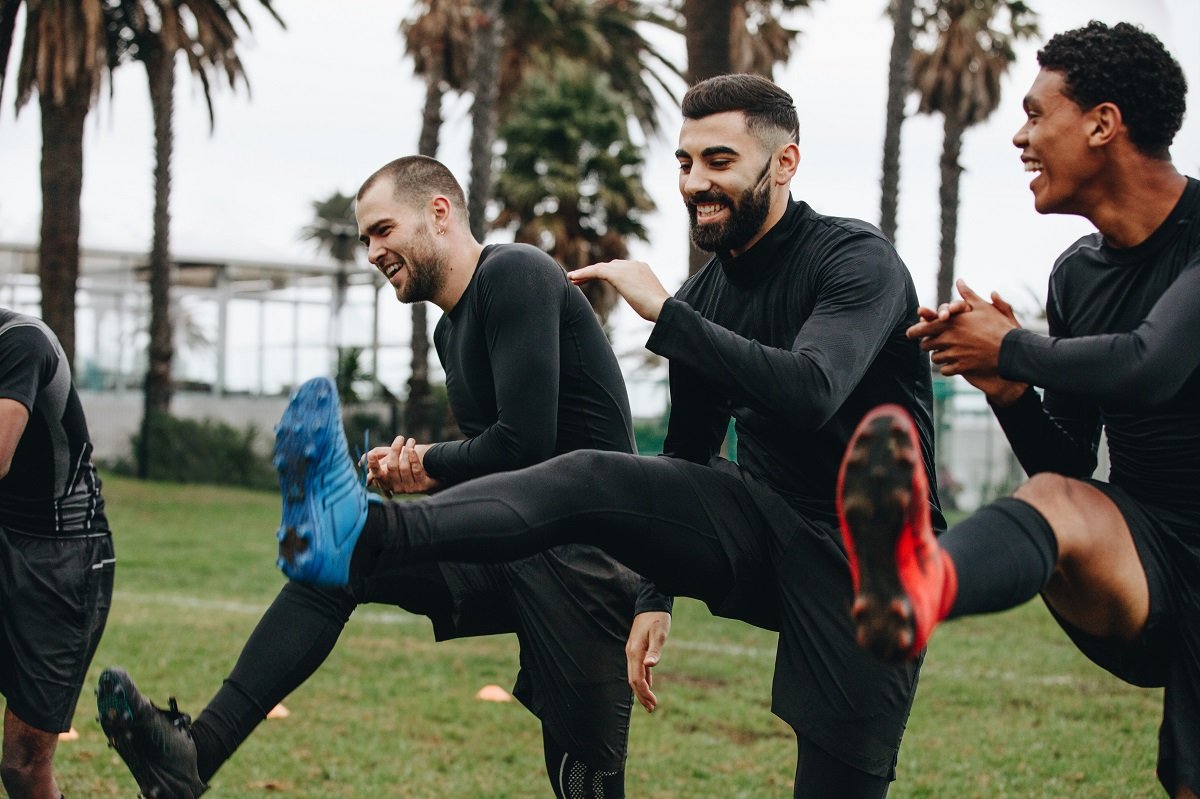
Dynamic stretching
Dynamic stretching involves moving parts of your body and gradually increasing reach and speed. Unlike static stretching, dynamic stretches are meant to be functional and related to the movements you’ll be doing in the sport (in this case, football).
Example stretches
- Leg swings: Forward and backward leg swings to loosen up the hamstrings and hip flexors.
- Arm circles: Large circles to warm up the shoulder joints and upper body.
- Walking lunges: Step forward into a lunge position, alternating legs, to warm up the lower body and improve hip flexibility.
- High knees: Running on the spot, bring the knees up to waist height to warm up the calves, hamstrings, and hip flexors.
Cardiovascular warm-up
A cardiovascular warm-up increases heart rate and blood flow, preparing the cardiovascular system for the demands of a football game.
Example exercises
- Jogging: A light jog around the pitch for 5-10 minutes to get the blood flowing and raise your core body temperature.
- Skipping: Using a skipping rope can be an effective way to increase heart rate while warming up the calves, ankles, and feet.
Football-specific drills
These drills mimic the movements and intensity of a football game, ensuring that players are ready for the specific demands of the sport.
Example drills
- Dribbling drills: Practice dribbling the ball around football cones to enhance coordination and footwork.
- Passing and shooting drills: Utilise teammates or football rebounders for passing and shooting drills that gradually increase in intensity to activate the muscles used during play.
- Quick feet drills: Use a football ladder or cones to practice fast footwork, improving agility and responsiveness.
READ ALSO: What are the best penalty kick training drills?
Football cool-down exercises for recovery

Light aerobic activity
After the game or training, it's important to lower the heart rate and relax the muscles gradually.
Example activities
- Walking: A five- or 10-minute walk around the pitch helps reduce heart rate gradually and flush out metabolic waste products from the muscles.
- Slow jogging: Light jogging can also help with the gradual reduction of intense activity.
Static Stretching
Static stretching helps to improve flexibility and reduce muscle tension. It should be performed slowly and with control.
Example stretches
- Quadriceps stretch: Standing on one leg, pull the other foot towards your buttocks, keeping your knees together.
- Hamstring stretch: Sit on the ground with one leg extended and the other bent. Reach towards the toes of the extended leg, holding the stretch.
- Calf stretch: Place both hands on a wall, step one foot back and press the heel down, stretching the calf muscles.
- Groin stretch: Sit with the soles of your feet together and gently push your knees towards the ground with your elbows.
Mobility exercises
Mobility exercises help maintain the range of motion in joints and muscles, which is essential for overall athletic performance.
Example exercises
- Hip circles: Stand on one leg and make circular movements with the other leg, keeping the movement slow and controlled.
- Ankle circles: Rotate the foot in both directions to maintain ankle flexibility and strength.
Football warm-up exercises for groups
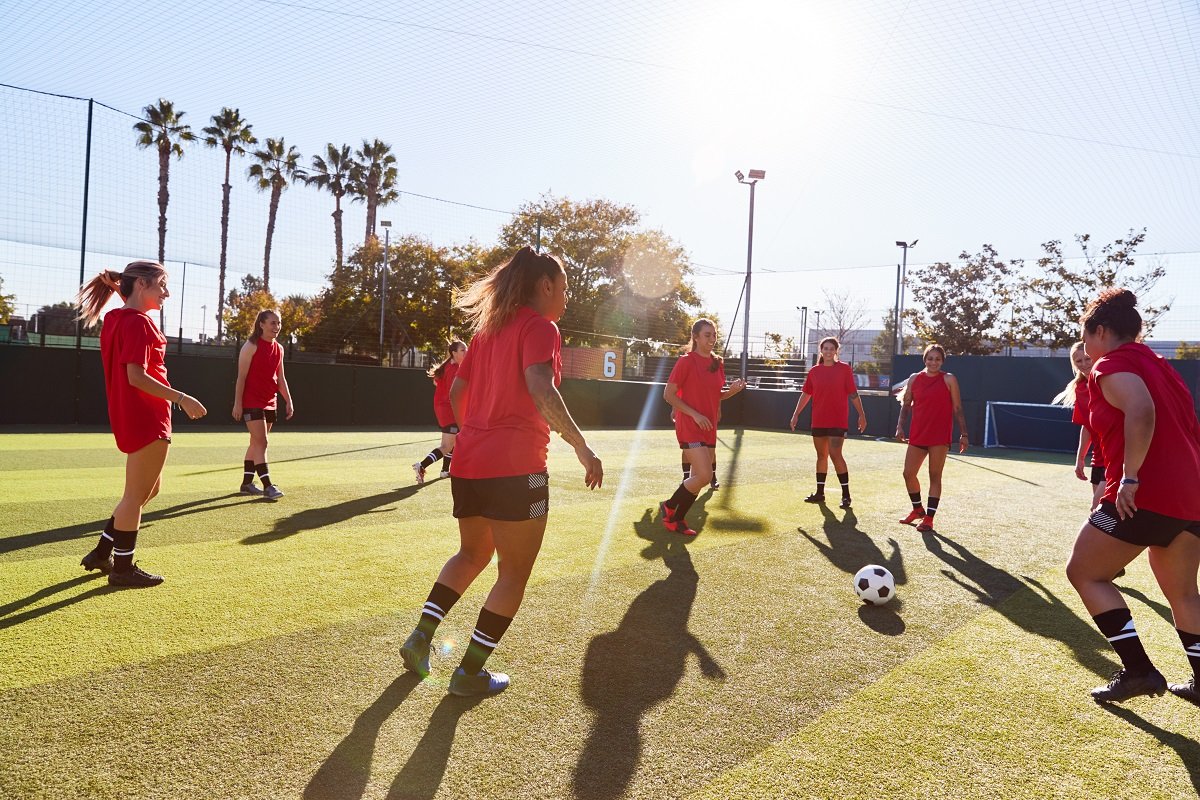
Rondo drills
The rondo is a type of football training drill that involves a group of players trying to keep possession of the ball while a smaller number of players try to win the ball back.
This is a great drill to warm up with your teammates before a game. There are many benefits to the rondo, including the ones highlighted by England Football:
“The benefits are wide-ranging, with aspects such as instant decision-making, communication, composure, high-intensity possession and defending all developed and the variations adding additional dynamics, such as being able to play in transition.”
3v2 to goal
Another great warm-up for groups is a ‘3v2 to goal’ drill. This drill sees three attacking players attempt to score against two opposing defenders.
The 3v2 is both a fun and competitive way to warm up players, recreating in-game situations. Other benefits include allowing players to work on their decision-making and teamwork skills.
READ ALSO: What are the best goalkeeper training drills?
How to warm up effectively before playing football
An effective football warm-up should last between 20 and 30 minutes (certainly no less than 10 minutes). The warm-up should gradually increase in intensity, starting with simple exercises like jogging and dynamic stretching, then ending with technical drills that imitate real match situations.
How to cool down effectively after playing football
A good football cooldown should last for about 15 to 20 minutes. The first five to 10 minutes should involve some gentle exercise to help lower the heart rate. Follow this with some simple static stretching for the remainder of your cool down. It’s also important to commence your cool down immediately after you cease playing football.
Tips for effective stretching
Dynamic vs. static stretching: when and why
- Dynamic stretching: Ideal for warm-ups as it prepares muscles and joints for movement. It should be specific to the activities in football, such as leg swings and arm circles.
- Static stretching: Best for cool-downs as it helps to relax and lengthen muscles after exercise. This type of stretching involves holding a stretch for 15-30 seconds.
Proper stretching techniques
- Breathing: Ensure you breathe deeply and steadily while stretching to help relax muscles and increase oxygen flow.
- Avoid bouncing: Bouncing can lead to muscle strains. Stretch smoothly and gradually increase the stretch to a point of mild discomfort, not pain.
- Consistency: Regular stretching improves flexibility over time, so make it a part of your routine.
READ ALSO: How to keep fit in the football off-season
Warm up and cool down correctly
Warming up and cooling down are vital components of any football training session or match. By incorporating dynamic stretching, cardiovascular activities, football-specific drills, and proper cool-down exercises, players can enhance their performance and significantly reduce the risk of injury.
Remember, consistency is key. Make these routines a part of your football routine to keep your body in peak condition, game after game.
Don’t forget to also incorporate high-quality football training equipment into your warm-ups and cool-downs. Here at Diamond, we supply products to every Premier League team. Browse our football products and shop with us today.


